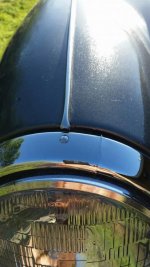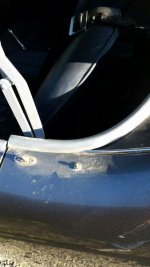Rob Glasgow
Jedi Knight
Offline
Does anyone have any tips about how to bend the stainless steel fender beading to match the contour of the fenders? New one come straight and they look like they will kink when bent to match the rear fender.
 Hi Guest!
Hi Guest!

 smilie in place of the real @
smilie in place of the real @
 Pretty Please - add it to our Events forum(s) and add to the calendar! >> Here's How <<
Pretty Please - add it to our Events forum(s) and add to the calendar! >> Here's How << 


... the dang things are just bling intended to dazzle the uninitiated. Real Sports Cars Don't Need Them.
... Of course you all wash your rides with de-ionized or at least distilled water, right? Entropy, it's not your friend.
Set from Moss is correctly curved for the rear, but the set comes in a long, straight tube.
